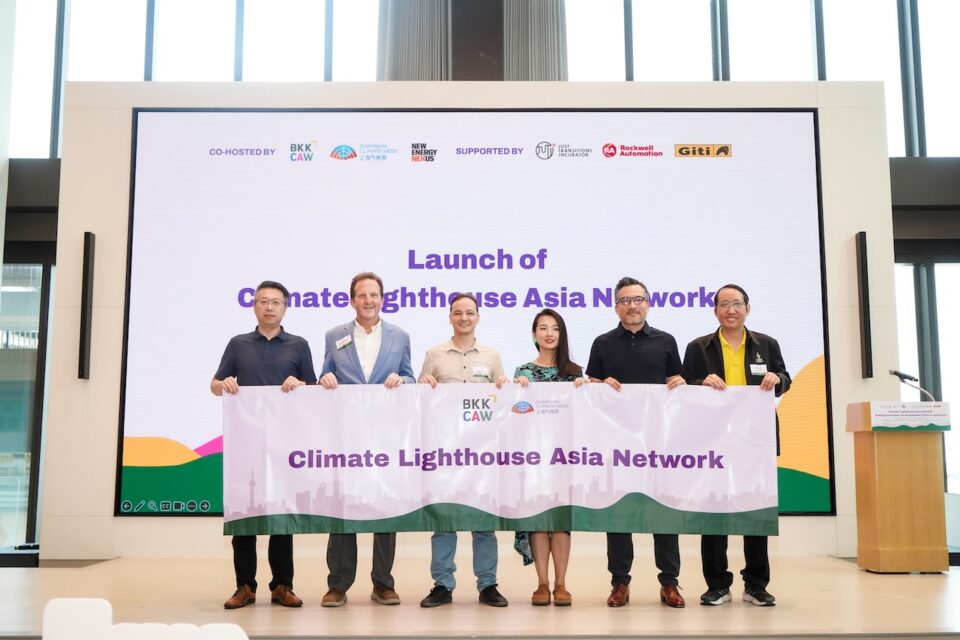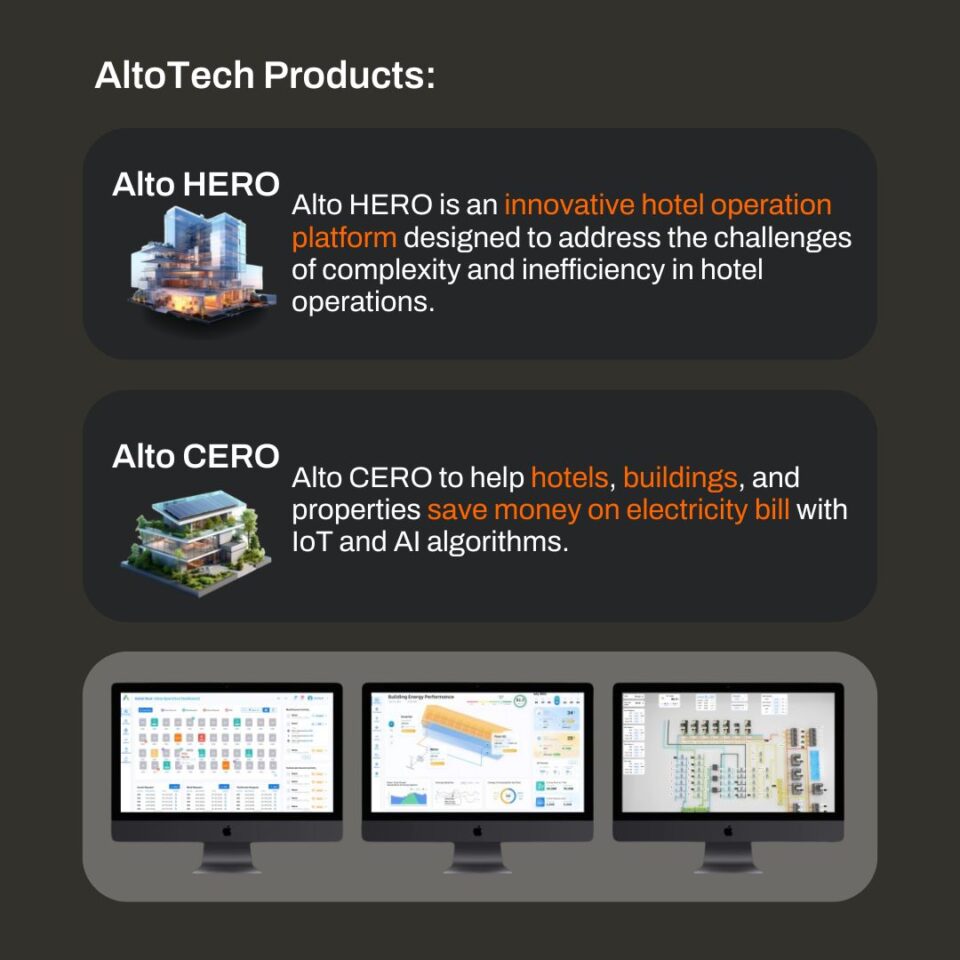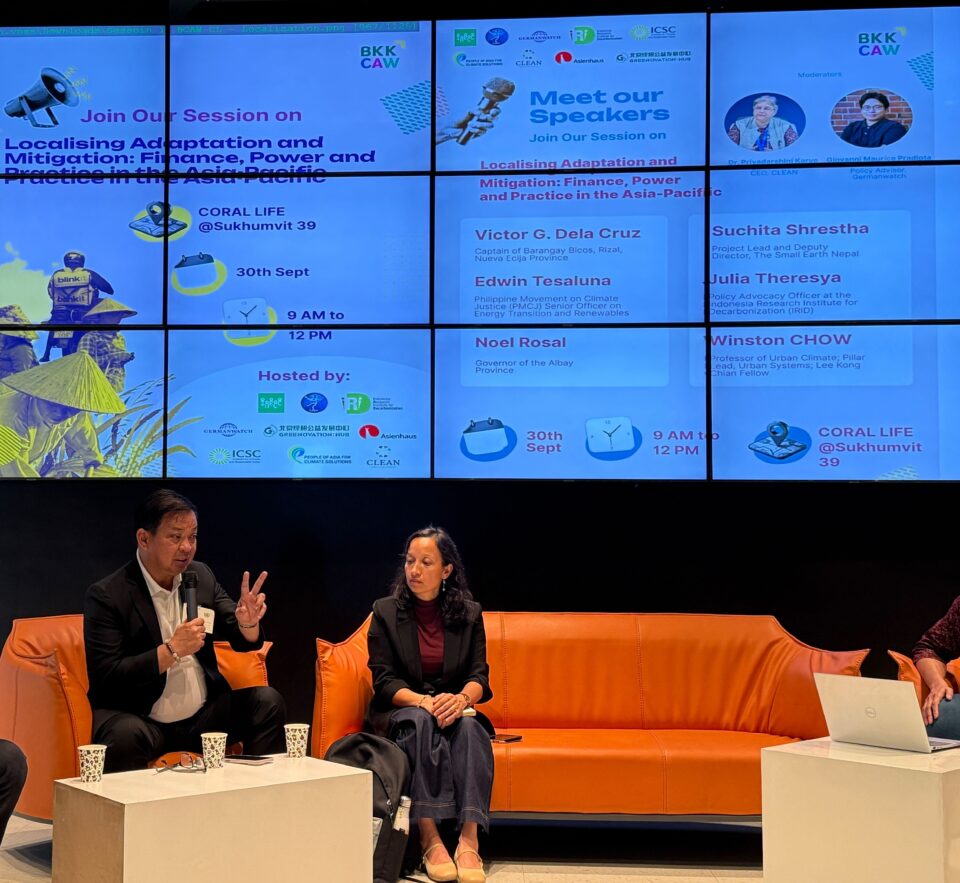Written by Jie Xiao, Country Director at New Energy Nexus China
I’ve just come back from three of the world’s biggest climate gatherings — New York Climate Week, Bangkok Climate Action Week, and Shanghai Climate Week — and one thing is crystal clear: the center of gravity in the global energy transition has shifted decisively to Asia. Everywhere I went, the same figures echoed: half of the world’s electricity is already consumed in this region, with Southeast Asia on course to account for 25% of global energy demand growth between now and 2035. The question is no longer whether Asia will lead the energy transition, but how.
And here’s the problem. Much of the conversation still focuses on supply and demand — China providing the technology and capital, Southeast Asia absorbing and applying it — rather than on what they can build together. That picture is badly outdated.
If Asia is to decarbonise at the speed required, this relationship must become a partnership of ecosystems, not just markets. What I saw across these climate weeks was the urgent need for entrepreneurship, collaboration, and shared innovation, not simply more shipments of solar panels across borders.
Asia already sits at the centre of this shift. Southeast Asia’s electricity demand is surging, growing nearly twice as fast as the global average. If these countries choose to lock in new fossil infrastructure, the world loses. If they leapfrog straight to clean energy, the world wins.

From left: Jason Dong, Executive Director of the Shanghai Climate Week Climate Lighthouse Professional Committee; Peter du Pont, Board Member at New Energy Nexus; Leo Horn-Phathanothai, Founder & Convenor of Bangkok Climate Action Week; Jie Xiao, General Manager of New Energy Nexus China; Ian Shih, Member of the Shanghai Climate Week Executive Committee, and International Advisor to the UNITAR Prosperity Alliance (Shanghai); and Dr. Manaswee Arayasiri, Sanitary Engineer at the Bangkok Metropolitan Administration.
That is why the relationship between China and Southeast Asia is so pivotal. What the climate weeks in Bangkok and Shanghai showed me is that Southeast Asia is not a passive recipient, but a laboratory for innovation. Local entrepreneurs are building new business models: rooftop solar sold on installment plans, mini-grids designed for island communities, efficiency solutions adapted to local commercial buildings.
And yet, the connective tissue between China’s and Southeast Asia’s clean energy innovation ecosystems remains thin. Chinese companies bring unmatched scale, capital, and supply-chain sophistication. But too many still see Southeast Asia as another export market due to limited understanding of local markets and policies, rather than a partner in co-creation. On the other side, Southeast Asian startups are inventive but often under-capitalised, locked out of manufacturing scale, and slowed by fragmented regulation. Both sides would benefit from deeper integration: shared accelerators, joint venture funds, mutual performance guarantees, and training exchanges that allow ideas to flow in both directions.
One moment in Bangkok captured what cross-border collaboration can look like in practice. At an event co-hosted by organisers of Shanghai and Bangkok Climate Weeks with New Energy Nexus China, we saw Chinese and Thai innovators meet not as exporters and buyers, but as partners in the clean energy transition. Corporates like TCL, LONGi, and Saint-Gobain showed how they’re digitalising factories and decarbonising supply chains, while startups such as Brick Technology, i2Cool, and Thailand’s Altotech shared solutions for smart, energy-efficient buildings. In that exchange, a new ecosystem took shape — built on trust, shared learning, and the belief that Asia’s net-zero future will be co-created, not imported.

Altotech (Bangkok) provides an integrated AIOT energy management platform for building cooling and air-conditioning system management. It automates building management all in one place, reducing electricity cost by potentially 20-30%. Altotech participated in our Smart Energy Hackathon, Smart Energy Accelerator, the Decarbonize Thailand Sandbox, as well as the NEX COP28 Climate Tech Startup Accelerator.
What struck me most after these three climate weeks is how stark the choice is. Asia can double down on a transactional model — hardware shipped one way, demand absorbed the other — or it can step up to build a genuine partnership of entrepreneurs and innovators. The former may look efficient, but it risks a brittle transition that cannot withstand shocks. The latter is harder, messier, slower to start. But it is the only way to build the resilient and adaptive clean energy systems that can carry half the world’s population into a decarbonised future.

Noel Rosal, Governor of Albay Province, Philippines, at Bangkok Climate Action Week 2025, discusses how local communities and institutions across the Asia Pacific are driving climate adaptation and mitigation through finance, leadership, and practical solutions.
China has much to gain from this shift: opening new markets, diversifying demand, and learning from the hard realities of diverse Southeast Asian geographies. Southwest Asia, in turn, gains access to proven technology and capital, while embedding its own innovators in global supply chains. This is not dependency; it is mutual advantage.
What New York Climate Week – with its big names and Western donors – offered was the view from the top: big finance, global politics, systemic frameworks. But it was Bangkok and Shanghai that offered the view from the ground: dynamic, entrepreneurial, urgent. If we want this to be the Asian decade of climate leadership, that is where our focus must be.
The lesson is simple. Southeast Asia’s clean-tech future will be built on ecosystems of entrepreneurs, investors and innovators working across borders, taking risks together, and co-creating solutions suited to the region’s realities. That was the palpable change I felt in Bangkok and Shanghai, and it is the change we must now scale.